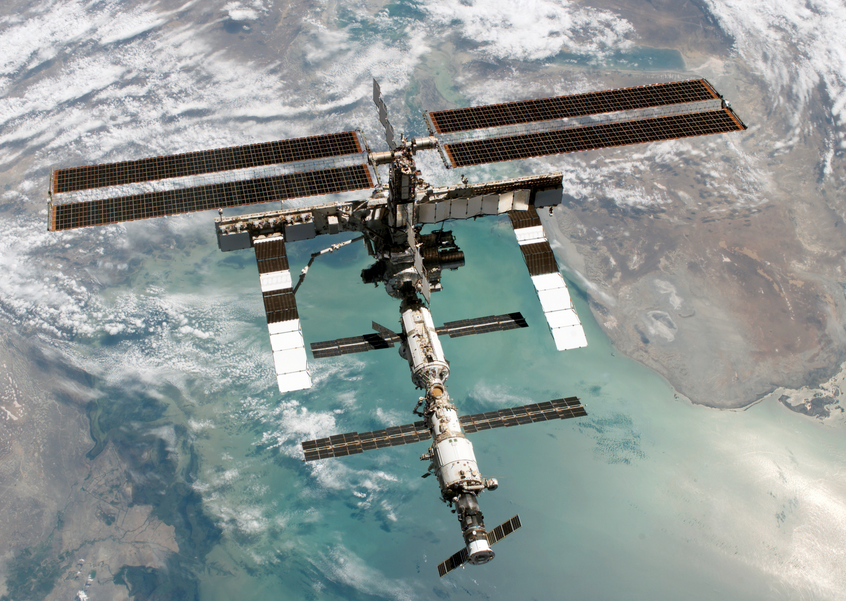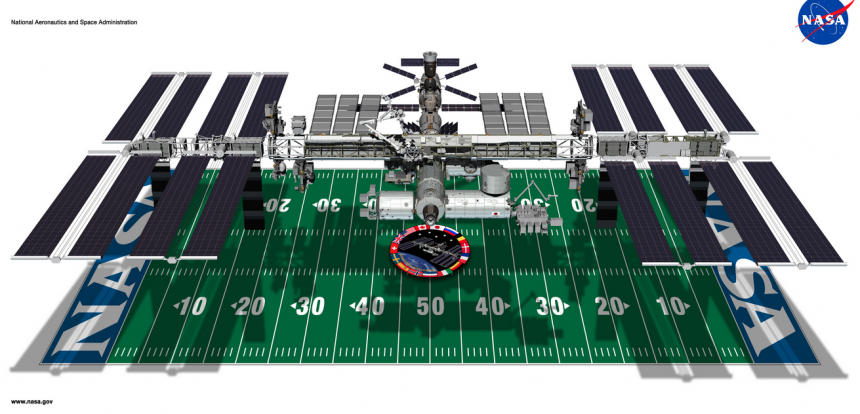Get an Email When the International Space Station is Overhead
The International Space Station is the third brightest object in the sky (after the sun and moon) – it can be seen without a telescope by the naked eye.
The ISS is even visible when spotted over a city and flies over about 90 percent of the Earth’s population.

Backdropped against the Caspian Sea, this full view of the international space station was photographed by a crew member onboard the Space Shuttle Discovery after the undocking of the two spacecraft. Image credit: NASA
How do you know when to look up?
NASA is now offering a Spot the Station service. This provides a list of upcoming opportunities to spot the ISS from thousands of world locations. You can also sign up to receive an email or a message on your cell phone when it’s overhead. You will only receive alerts during prime viewing opportune times, like only when the station is high enough over the horizon and in view long enough. NASA believes most will receive alerts a few times a week to a few times a month.
The ISS looks like a fast moving airplane but is much higher and travels thousands of miles an hour faster. It orbits the Earth every 90 minutes.
The station is about the size of a football field and has more livable space than a six-bedroom house, including two bathrooms, a gym and a 360-degree bay window.
Sign up for ISS alerts at NASA
Here are some facts about the ISS, courtesy of NASA –
- The International Space Station marked its 10th anniversary of continuous human occupation on Nov. 2, 2010. Since Expedition 1, which launched Oct. 31, 2000, and docked Nov. 2, the space station has been visited by 204 individuals.
- At the time of the anniversary, the station’s odometer read more than 1.5 billion statute miles (the equivalent of eight round trips to the Sun), over the course of 57,361 orbits around the Earth.
- A total of 174 spacewalks have been conducted in support of space station assembly totaling almost 1,100 hours, or nearly 46 days.
The International Space Station is not only an orbiting laboratory, but also a space port for a variety of international spacecraft. As of June 2013, there have been:
- 89 Russian launches
- 37 Space Shuttle launches
- 1 test flight and 2 operational flights by SpaceX’s Dragon
- 3 Japanese HTVs
- 3 European ATVs





Leave a Reply
Want to join the discussion?Feel free to contribute!